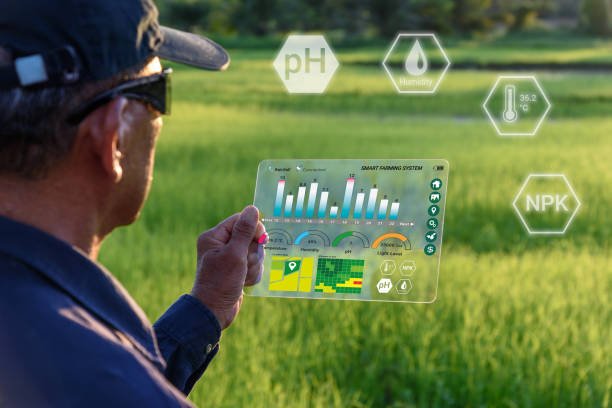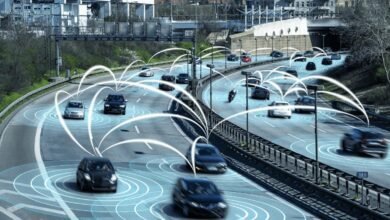How to Choose the Best IoT Sensors: Tips for Smart Decision-Making

In the rapidly advancing landscape of technology, the Internet of Things (IoT) has become a transformative force, connecting devices and enabling seamless communication. As businesses and individuals embrace the power of IoT to enhance efficiency and gather valuable data, the importance of choosing the right IoT sensors cannot be overstated. The success of any IoT project hinges on the careful selection of sensors that align with specific needs and requirements. In this guide, we will delve into insightful tips and considerations for making smart decisions when it comes to selecting the best IoT sensors. Whether you are navigating the complexities of industrial applications or enhancing your smart home, understanding the nuances of IoT sensor selection is paramount to unlocking the full potential of your connected ecosystem.
Understanding IoT Sensors
Before delving into the selection process, it’s essential to understand what IoT sensors are. These devices detect and measure physical attributes, converting them into data that can be analyzed and utilized for various applications.
Importance of Choosing the Right IoT Sensors
Selecting the appropriate sensors is a critical aspect of any IoT project. The right sensors ensure accurate data collection, enhance system reliability, and contribute to the overall success of the IoT implementation.
Types of IoT Sensors
Temperature Sensors
Temperature sensors monitor changes in temperature, crucial for applications like climate control, industrial processes, and healthcare.
Motion Sensors
Motion sensors detect movement and are integral in security systems, automated lighting, and gaming devices.
Proximity Sensors
Proximity sensors identify the presence or absence of an object, widely used in robotics, smartphones, and manufacturing.
Light Sensors
Light sensors measure ambient light levels, essential in smart lighting systems, photography, and outdoor automation.
Considerations for Choosing IoT Sensors
When selecting IoT sensors, several factors should be considered to ensure optimal performance and compatibility with your specific application.
Compatibility
Ensure that the sensors chosen are compatible with the existing IoT infrastructure and other devices in the network.
Accuracy
The accuracy of sensor data is paramount. Choose sensors with high precision to guarantee reliable and precise measurements.
Power Consumption
Consider the power requirements of the sensors, especially for remote or battery-operated devices. Opt for energy-efficient options to prolong the sensor’s lifespan.
Connectivity
Choose sensors with appropriate connectivity options (Wi-Fi, Bluetooth, Zigbee, etc.) that align with your IoT network architecture.
Cost
While cost is a factor, it should not compromise the quality of sensors. Balance your budget constraints with the need for reliable and accurate data.
Key Features to Look for in IoT Sensors
Sensing Range
The sensing range determines the distance over which the sensor can effectively detect and measure data. Consider this factor based on your application’s requirements.
Data Resolution
Higher data resolution provides more detailed and accurate information. Choose sensors with suitable data resolution for your specific use case.
Response Time
Swift response times are crucial, especially in real-time applications. Opt for sensors with minimal latency to ensure timely data acquisition.
Durability
Consider the environmental conditions in which the sensors will operate. Choose durable sensors that can withstand factors like temperature fluctuations, humidity, and physical stress.
Popular IoT Sensor Brands
Explore reputable brands known for manufacturing high-quality IoT sensors. Some well-regarded names include Bosch, Texas Instruments, and Honeywell.
Case Studies
Industrial Applications
Examine how IoT sensors have transformed industries like manufacturing, logistics, and agriculture through real-world examples.
Smart Home Applications
Explore the role of IoT sensors in creating efficient and secure smart homes, from energy management to home security.
Future Trends in IoT Sensors
Stay ahead by exploring emerging trends such as edge computing, AI integration, and the evolution of sensor technologies.
Challenges in IoT Sensor Selection
Selecting the right IoT sensors presents a set of challenges that individuals and businesses need to navigate effectively to ensure the success of their IoT projects. Understanding and overcoming these challenges is crucial for harnessing the full potential of IoT technologies. Below, we explore some common challenges associated with IoT sensor selection:
Interoperability Issues:
One of the significant challenges in IoT sensor selection is ensuring seamless interoperability with existing devices and platforms. Different manufacturers may use varied communication protocols and standards, making it essential to carefully assess compatibility to avoid integration complexities.
Evolving Industry Standards:
The landscape of IoT is dynamic, with industry standards continuously evolving. Keeping abreast of these changes is challenging but necessary to choose sensors that align with the latest protocols and security measures. Failure to do so may result in outdated or non-compliant sensor solutions.
Scalability Concerns:
As IoT projects grow, scalability becomes a concern. The sensors chosen should be capable of scaling with the expanding network, accommodating additional devices without compromising performance or requiring frequent replacements.
Data Security and Privacy:
Ensuring the security and privacy of data collected by IoT sensors is a persistent challenge. With the increasing frequency of cyber threats, selecting sensors with robust security features is paramount to protect sensitive information from unauthorized access or breaches.
Tips for Smart Decision-Making
Summarize the key considerations and tips to guide readers in making informed decisions when choosing IoT sensors.
Read More : Best Practices for IoT Device Management: A Complete Guite In 2024
Conclusion
the process of selecting the best IoT sensors is a crucial aspect of any IoT project, influencing its success and long-term effectiveness. The world of IoT is dynamic, and as technology continues to advance, the right choice of sensors becomes increasingly pivotal. Throughout this guide, we have explored various facets, from understanding the types of sensors available to discussing essential considerations like compatibility, accuracy, and cost.As you navigate the landscape of IoT sensor selection, always keep in mind the specific needs of your application.
Compatibility with existing infrastructure, precision in data collection, and mindful cost considerations are the pillars upon which smart decisions are built. Additionally, embracing emerging trends and acknowledging potential challenges in the selection process will position you for success in the ever-evolving realm of IoT.In essence, the tips provided aim to empower individuals and businesses to make informed, strategic decisions when choosing IoT sensors. The right sensors not only contribute to the efficiency and reliability of your IoT ecosystem but also pave the way for innovative solutions and applications. As you embark on your journey in the world of IoT, may these insights guide you towards selecting the best IoT sensors for your unique needs and objectives.
FAQs : Best IoT Sensors:
Q: Can I mix and match IoT sensors from different brands?
A: While possible, it’s advisable to stick to one brand for compatibility and seamless integration.
Q: Are there any open-source IoT sensor options available?
A: Yes, several open-source options exist, providing flexibility for customization and development.
Q: How often should IoT sensors be calibrated?
A: Calibration frequency depends on the sensor type and usage, but regular checks are recommended for accuracy.
Q: Can IoT sensors be used in extreme environmental conditions?
A: Yes, certain sensors are designed to withstand extreme conditions, but it’s crucial to choose appropriately.
Q: What role do IoT sensors play in data security?
A: IoT sensors contribute to data security by providing real-time monitoring and alerts for potential breaches.











